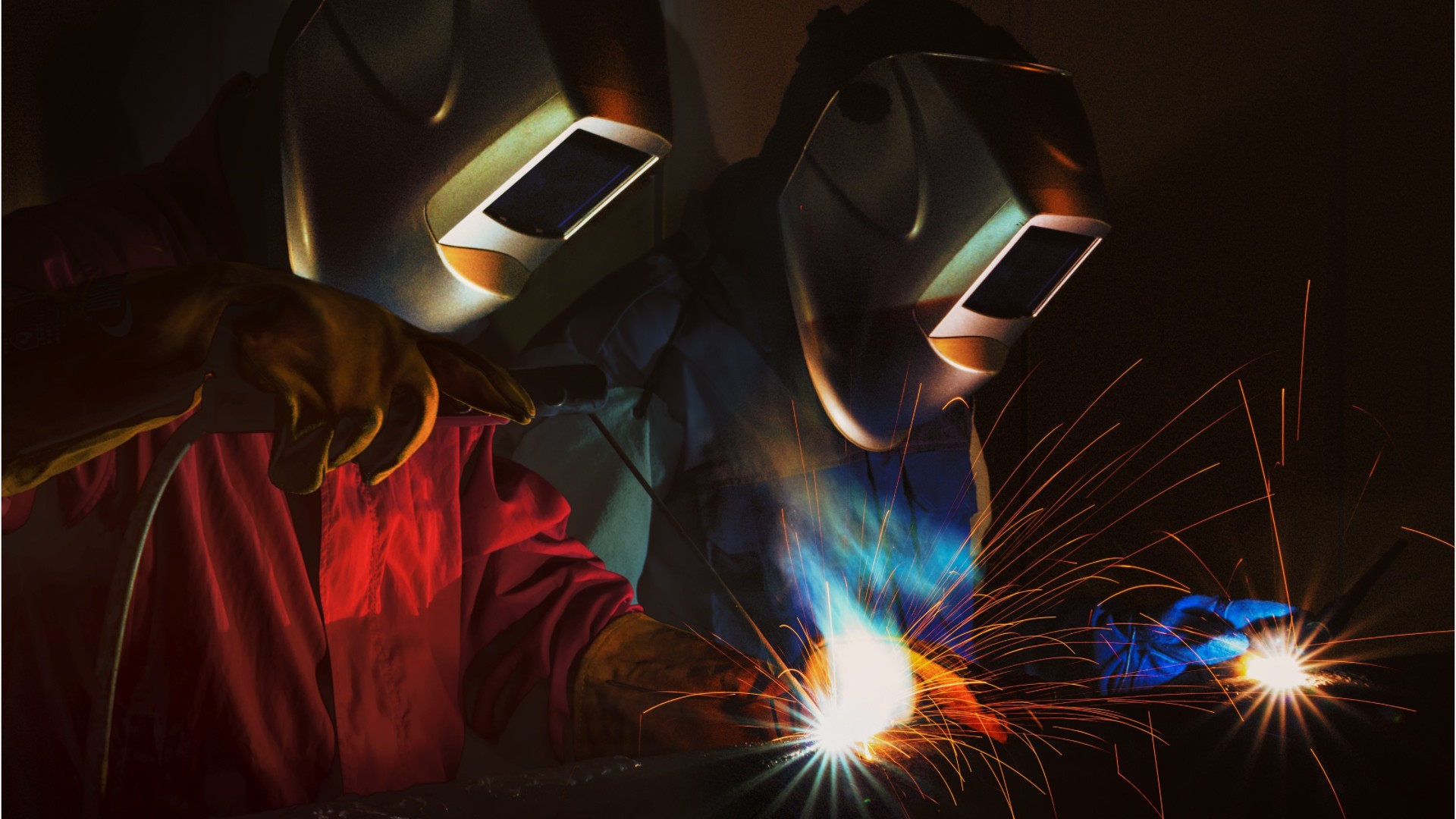Boilermakers
Boiler Mechanic, Boiler Technician (Boiler Tech), Boilermaker, Boilermaker Mechanic
What they do:
Construct, assemble, maintain, and repair stationary steam boilers and boiler house auxiliaries. Align structures or plate sections to assemble boiler frame tanks or vats, following blueprints. Work involves use of hand and power tools, plumb bobs, levels, wedges, dogs, or turnbuckles. Assist in testing assembled vessels. Direct cleaning of boilers and boiler furnaces. Inspect and repair boiler fittings, such as safety valves, regulators, automatic-control mechanisms, water columns, and auxiliary machines.
On the job, you would:
- Conduct pressure tests on vessels, such as boilers.
- Study blueprints to determine locations, relationships, or dimensions of parts.
- Examine boilers, pressure vessels, tanks, or vats to locate defects, such as leaks, weak spots, or defective sections, so that they can be repaired.
Knowledge
Engineering and Technology
- mechanical
Arts and Humanities
- English language
Math and Science
- arithmetic, algebra, geometry, calculus, or statistics
Skills
Basic Skills
- thinking about the pros and cons of different ways to solve a problem
- figuring out how to use new ideas or things
Problem Solving
- noticing a problem and figuring out the best way to solve it
Abilities
Hand and Finger Use
- hold or move items with your hands
- keep your arm or hand steady
Controlled Movement
- quickly change the controls of a machine, car, truck or boat
- use your arms and/or legs together while sitting, standing, or lying down
Ideas and Logic
- notice when problems happen
- use rules to solve problems
Verbal
- listen and understand what people say
Personality
People interested in this work like activities that include practical, hands-on problems and solutions.
They do well at jobs that need:
- Cautiousness
- Attention to Detail
- Dependability
- Perseverance
- Integrity
- Stress Tolerance
Technology
You might use software like this on the job:
Spreadsheet software
- Microsoft Excel
Electronic mail software
- Microsoft Outlook
Computer based training software
- Health and safety training software
Education
Education: (rated 2 of 5)
high school diploma/GED or
certificate after high school
usually needed
certificate after high school
usually needed
Job Outlook
Below Average
New job opportunities are less likely in the future.
Explore More
- Engine & Other Machine Assemblers
- Helpers--Pipelayers, Plumbers, Pipefitters, & Steamfitters
- Millwrights
- Plumbers, Pipefitters, & Steamfitters
- Stationary Engineers & Boiler Operators
You might like a career in one of these industries:
See more details at O*NET OnLine about Boilermakers.





